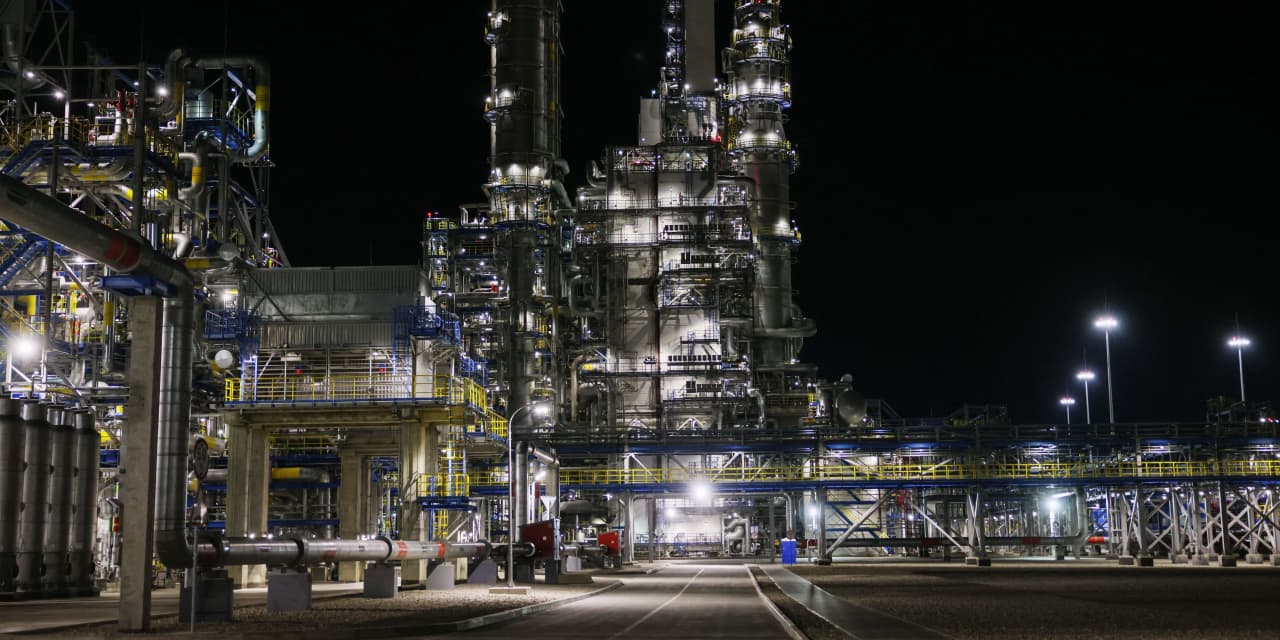Wall Street seems to love the merger between
Chesapeake Energy
and
Southwestern Energy
announced on Thursday.
Jefferies analyst Lloyd Byrne called the combined company a “must own” for investors. It’s easy to see why. The merger will create the dominant natural gas producer in the U.S. and give investors exposure to two of the hottest themes in energy. The new company will be one of the biggest beneficiaries from Europe’s transition away from Russian natural gas in the wake of Ukraine war, which has already led to increased demand for U.S. gas. And it will benefit from the green transition, as power plants shift generation from coal to natural gas, which produces less carbon dioxide.
On its face, the merger between Chesapeake Energy and Southwestern Energy looks like an entirely domestic affair. The companies are based in Oklahoma and Texas, and they drill in the U.S. Domestic natural gas deals have mostly been doomed over the past two decades, but it’s a different game now.
For years, natural gas produced in the U.S. was sold almost entirely to American consumers, because the only way to export gas was through pipelines to Canada and Mexico that had capacity for less than 10% of U.S. production. The last time Chesapeake went on an acquisition spree and expanded production, starting about 15 years ago, the timing was terrible. The fracking boom caused natural gas production to rise exponentially, but demand couldn’t keep up. Prices stayed between $2 and $3 per million British Thermal Units for most of the decade between 2010 and 2020, a level at which gas producers can barely make any profits. Chesapeake filed for bankruptcy protection in 2020 after expanding too quickly during the prior decade. A deal by
Exxon Mobil
to buy natural gas company XTO Energy in 2010 also resulted in asset write-downs.
But the economics of natural gas changed dramatically in 2016, when U.S. operators started shipping liquefied natural gas (LNG) overseas. The U.S. now sends about 12% of its natural gas overseas, and the share is expected to grow to about 20% in 2030, according to Enverus Intelligence Research analyst Andrew Dittmar.
U.S. LNG is in particularly high demand because of Russia’s invasion of Ukraine. Russia had been the dominant natural gas exporter to Europe before the war, supplying the continent with about 40% of its gas. With almost all of that gas shut off now, Europe depends on American shipments more than ever. Asian demand for LNG has also been rising. LNG sells at a significant premium to domestic natural gas, with the Dutch and Asian benchmarks currently trading at more than three times U.S. prices.
Eventually, analysts expect the increase in exports to cause U.S. prices to “tighten the gap” with international prices, benefiting natural gas producers like Chesapeake. In fact, Chesapeake has begun locking in long-term deals to sell its production directly into the LNG market once new export terminals are completed in the next year or two. Both Chesapeake and Southwestern have substantial assets in the Haynesville Shale, a productive natural gas basin with easy access to export terminals. The combined company will be the largest Haynesville producer.
The other major trend benefiting natural gas is the demise of coal. Natural gas and coal are substitutes in power production. While coal demand saw a renaissance in 2022 as the Russian war caused gas prices to rise, coal’s long-term trajectory looks bleak. In the U.S., natural gas now accounts for the largest share of electricity generation at 42%, with coal down to 17% and falling fast. As recently as 2015, coal was the largest source of U.S. electricity.
The switch from coal to gas is the biggest reason U.S. emissions have been on the downswing in recent years, and that same switch is likely to occur elsewhere. Global coal consumption is likely to have peaked in 2023, according to the International Energy Agency. Eventually, solar and wind power will take share from natural gas in electricity production, but that probably won’t happen for several years. In the meantime, Chesapeake could thrive.
Write to Avi Salzman at [email protected]
Read the full article here




